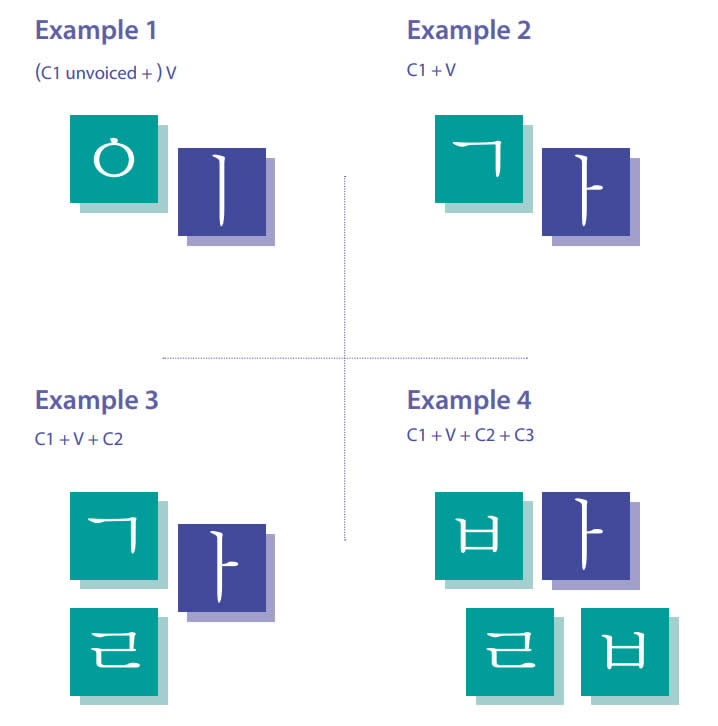Difference between revisions of "Language/Korean/Pronunciation/How-to-write-Korean-syllables"
< Language | Korean | Pronunciation
Jump to navigation
Jump to search
(Created page with "thumb <div style="font-size:300%"> How to write Korean syllables</div> __TOC__ <div style="float:right"> ==받침== Some pronunciatio...") |
|||
| Line 1: | Line 1: | ||
[[File:Korean-Language-PolyglotClub.png|thumb]] | [[File:Korean-Language-PolyglotClub.png|thumb]] | ||
<div style="font-size:300%"> How to write Korean syllables</div> | <div style="font-size:300%"> How to write Korean syllables</div> | ||
Korean writing is conceived in blocks representing syllables, each composed of an initial consonant, a (medial) vowel or a diphthong, and finally an ending composed of one or two consonants known as batchim. Consider the following examples: | Korean writing is conceived in blocks representing syllables, each composed of an initial consonant, a (medial) vowel or a diphthong, and finally an ending composed of one or two consonants known as batchim. Consider the following examples: | ||
[[File:Korean-Language-syllabe1-PolyglotClub.jpg]] | [[File:Korean-Language-syllabe1-PolyglotClub.jpg]] | ||
==받침== | |||
Some pronunciation change if followed by this particle. The word batchim (받침, literally meaning “basis, support”) refers to consonants at the conclusion of a syllable. Not all syllable blocks have one; for instance, those in examples 1 and 2 don’t have any. Example 3 has one, and example 4 has a double batchim. | |||
==Sources== | ==Sources== | ||
*https://www.spdbooks.org/Content/Site106/FilesSamples/9781624120688.pdf | *https://www.spdbooks.org/Content/Site106/FilesSamples/9781624120688.pdf | ||
Revision as of 18:02, 5 November 2021
How to write Korean syllables
Korean writing is conceived in blocks representing syllables, each composed of an initial consonant, a (medial) vowel or a diphthong, and finally an ending composed of one or two consonants known as batchim. Consider the following examples:
받침
Some pronunciation change if followed by this particle. The word batchim (받침, literally meaning “basis, support”) refers to consonants at the conclusion of a syllable. Not all syllable blocks have one; for instance, those in examples 1 and 2 don’t have any. Example 3 has one, and example 4 has a double batchim.

